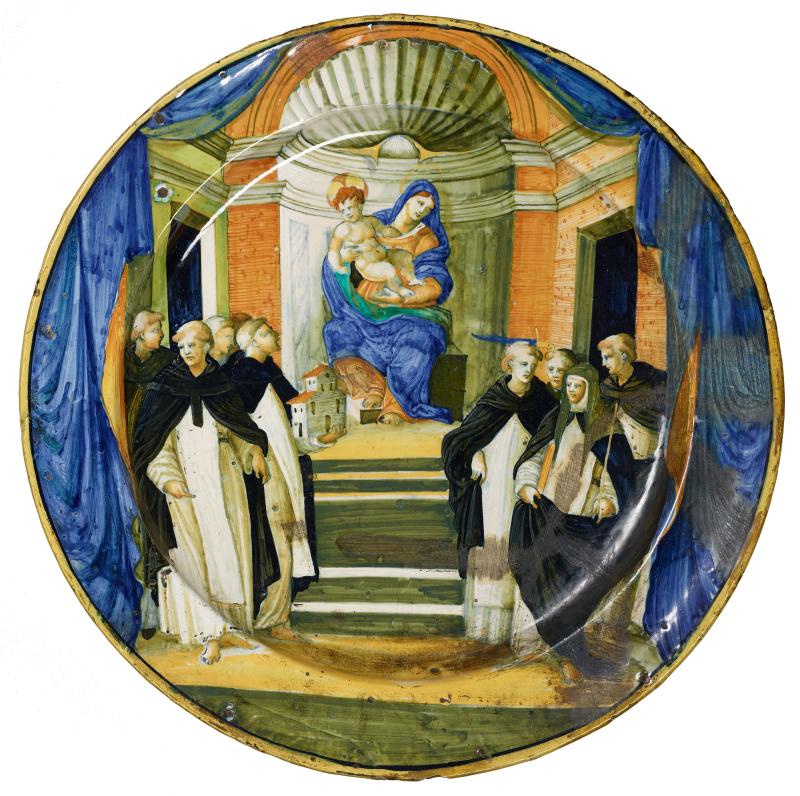
Majolica ware is prepared by tin-glazing earthenware and firing it for a second time. The technique originated in the Middle East in the ninth century, and by the thirteenth century the ceramics were imported into Italy through the Isle of Majorca, from which its name is derived. The term now refers to ceramic ware in the stylistic tradition of the Italian Renaissance, as adapted from Middle Eastern imports. In this large plate, the Madonna and infant Jesus are pictured enthroned in an architectural niche, flanked on either side by saints of the Dominican order. To the Virgin's left stands Saint Peter displaying one of the tools of his martyrdom with a large knife which cleaves his skull. The composition for this plate is thought to be derived from a fresco painting by Fra Bartolommeo (1472-1517) in the Museo di San Marco, the former Dominican convent in Florence.
The composition is a simplified version of Fra Bartolommeo's painting of the Virgin enthroned in the Museo di San Marco, Florence.
